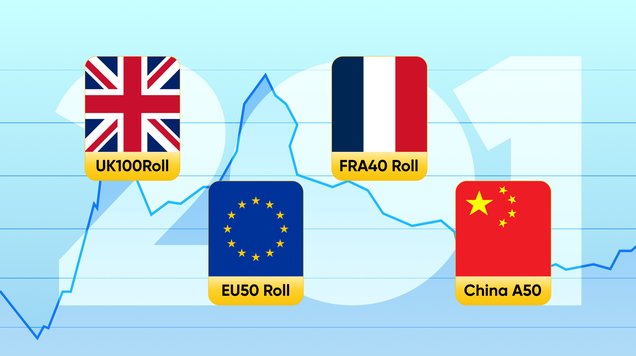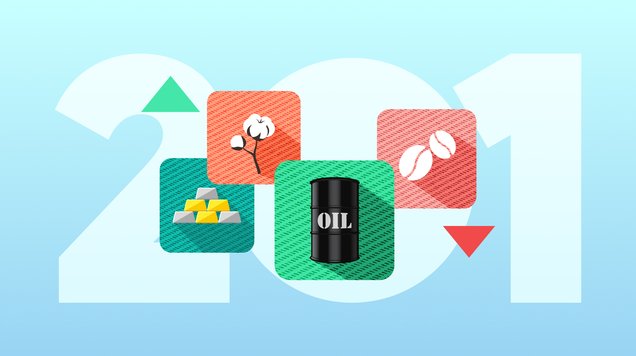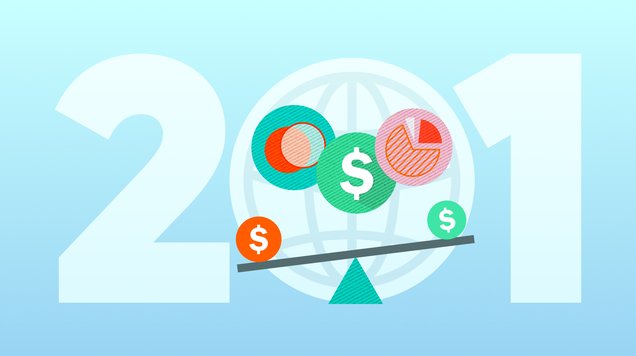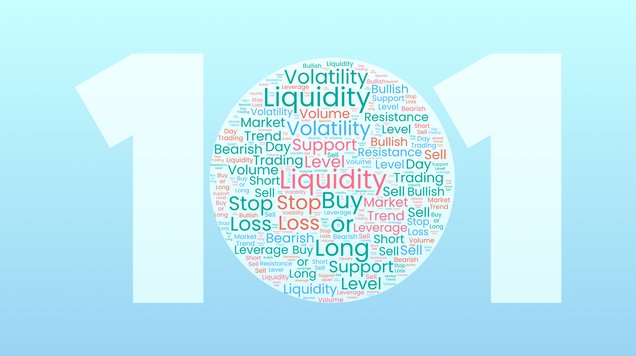Understanding the role of central banks in financial markets
Learn how central banks manage monetary policies and how it might affect your trading decisions.

Central banks are typically responsible for implementing a country’s monetary policy, meaning their actions can impact a country's exchange rate and level of economic growth
Most central banks have a key core objective of ensuring price stability, although some have a dual mandate to target other objectives too, such maximising the level of employment
To achieve these objectives, central banks' have a diverse toolkit available to them, ranging from setting interest rates, adjusting bank reserve requirements and, at the extreme, engaging in quantitative easing and tightening
For traders and investors, central bank actions can directly impact forex rates and other trading products, offering the opportunity to capture any potential gains
What are central banks?
Central banks are national financial institutions that are typically responsible for implementing a country's monetary policy. National governments typically retain responsibility for setting monetary policy objectives, with the role of the central bank being to act as the government's agent and use the policy tools available to it to try and meet these objectives.
The key task central banks are given responsibility for is normally the pursuit of price stability, which is expressed by achieving a target for a measure of inflation, such as the consumer price index (CPI), or a local equivalent. However, central banks can also be tasked with things such as supporting government efforts to maximise economic growth, promoting full employment and targeting a certain level for the exchange rate. Clearly not all of these objectives are mutually exclusive and meeting one of them can sometimes only be achived at the expense of missing another.
When trying to meet these objectives, central banks can employ a suite of monetary policy tools, including the setting of interest rates, adjusting bank reserve requirements (the amount of funds banks are required to hold on account with their respective central bank) and, at the extreme, engaging in quantitative easing and tightening.
The actions of central banks can directly determine the strength of a country's currency. Therefore, forex traders and investors will often follow central bank reports, decisions, conferences, and speeches to gain an insight into their thinking, attempting to anticipate any changes in monetary policy settings that might be implemented and which might require an adjustment in their trading and investment strategies.
In this article, we will explore the role of central banks, their mandates, how their policies impact the real economy, and their impact on currencies, economic growth, jobs, and inflation.
Central bank mandates
Central banks are found in most countries of the world. They are established under different laws, in different jurisdictions and have different policy tools available to them. However, they typically tend to share a common set of mandates that guide their actions in different economic environments.
1. Stabilising prices
The core mandate of nearly all central banks is to stabilise prices. This can be expressed in different ways, such as targeting an explicit exchange rate, meeting a set target for CPI (or local equivalent), or ensuring a fixed rate of growth in the money supply. The most common means of ensuring price stability is via the targeting of a specific value for CPI.
CPI is an index that represents the average change in price of a basket of commodities (both goods and services) that are regularly consumed by an economy’s typical household. Accordingly, the basket will normally comprise the prices of items such as food and drink, energy, transport, healthcare, apparel, leisure and recreation, education, housing. Changes in the level of CPI are normally calculated and published every month, providing a database that allows central banks to track changes in the price level each month, quarter, half year, or year. As central banks track these changes in the price level, so they can then adjust their policy settings with the aim of ensuring CPI remains as close as possible to its mandated target.
If CPI rises above its target, the central bank will attempt to reduce the level of aggregate demand in the economy. This will typically be done by raising the level of interest rates, making the cost of both borrowing and dissaving more expensive and discouraging firms and households from spending money. Conversely, if CPI falls below target then interest rates will typically be lowered to boost the appetite to borrow and spend.
2. Ensuring economic growth
Some central banks may also have a dual mandate of ensuring a set level of economic growth is achieved in addition to targeting CPI. The tools available to them in achieving this will be identical to those they will have if targeting CPI only. For example, during periods of low growth, interest rates may be cut in an attempt to stimulate firms to borrow and invest, in turn raising output levels and boosting growth. Lower interest rates can also encourage consumers to spend more money in shops, providing an incentive for firms to boost output as they strive to meet this extra demand.
3. Maintaining full employment
Related to the objective of maintaining a given level of economic growth can be a target for maintaining full employment. The level of employment is often a key political consideration for governments and therefore central banks can be tasked with helping to ensure it remains as high as possible. Since central banks can set the level of interest rates, which in turn impacts the level of economic activity, so this objective encourages them to keep interest rates as low as possible in order to maximise activity and ensure the demand for labour remains high.
However, it is important to be aware that pursuing both price stability and economic growth/employment can result in conflict. For example, in a period of stagflation, characterised by persistent high inflation combined with high unemployment and low growth, the simultaneous need for both a restrictive and expansive monetary policy is presented. Accordingly, central banks with such dual targets will need to prioritise one over the other, implicitly if not explicitly.
Monetary policy transmission tools
In addition to adjusting interest rates, central banks have a host of tools that they can use to influence the economy and meet their objectives. These include setting reserve requirements, open market operations and quantitative easing/tightening.
Setting reserve requirements
Commercial banks operate within a framework regulated by either central banks or another government body.
Regardless of the authority in charge, these regulations will typically require a specific proportion of a banks balance sheet to be held on deposit with the central bank. This proportion is known as the reserve ratio. It's unremunerated and typically used to finance the central banks operations.
It represents a cost to the commercial banking sector as these reserve requirements can no longer be lent by banks into the economy. Accordingly, by increasing or decreasing the size of the reserve requirement, central banks can effectively influence the amount of money available for lending, in turn influencing the level of economic activity.
Open market operations
Open market operations involve the buying and selling of government bonds, bills and notes. By buying or selling these bonds for cash with commercial banks, central banks can increase or reduce the amount of money in the banking sector, thereby influencing the interest rate that banks will be willing to lend to each other.
Open market operations are normally short-term in nature and target a specific maturity. For example, the Bank of England typically uses open market operations with a one month duration to ensure the one month lending rate in the banking sector matches the rate set by its own MPC. This rate then becomes the minimum lending rate within the wider economy.
When the central bank wants to lower the market interest rate, it will inject money into the economy via buying bonds from banks; when it wants to raise in the level of interest rates it will withdraw money from the economy by selling bonds.
Quantitative easing and quantitative tightening
A less commonly used tool is quantitative easing (QE). It's a strategy typically only used during economic crises when traditional monetary policy tools are less effective. The essence of QE lies in the central bank's purchase of bonds in the open market which delivers two results; reducing interest rates and increasing the money supply.
By purchasing bonds in the open market, the central bank effectively raises their price, reducing yields - and market interest rates - in the process. At the same time, the cost of purchasing these bonds is met by the central bank effectively creating money to buy them. This money is electronic in nature, meaning it appears on bank balance sheets as opposed to appearing via a physical increase in the supply of notes and coins. However, by inflating bank balance sheets it effectively increases the money supply, providing additional funds for lending and putting further downwards pressure on bank lending rates.
This unconventional approach is usually seen when interest rates approach zero, when further cuts may have only minimal impact on further stimulating lending and spending in the economy. Therefore, QE is a strategic response typically implemented during severe economic downturns only, providing a mechanism to boost liquidity and stimulate growth when conventional measures fall short.
Quantitative tightening (QT) is the opposite of quantitative easing and is seen during episodes of rapidly rising inflation. It seeks to remove money from the economy and increase market interest rates, removing demand in the process and acting as a drag on economic activity. QT is implemented by selling bonds that (typically) were accumulated during a period QE, or alternatively allowing these assets to mature, reducing the money supply in the process.
Policy decision making
Central banks will typically have designated committees, consisting of the Governor/President/Chairperson and other senior officials, who meet regularly to discuss how close, or otherwise, the central bank is to meeting its mandated objectives and if any changes in monetary policy settings are required. If any changes are needed, these will then be implemented by the markets operation teams inside each central bank.
For example, the US Federal Reserve Bank (Fed), implements monetary policy decisions that have been passed by the Federal Open Market Committee (FOMC); the Bank of England (BoE) implements monetary policy decisions that have been passed by the Monetary Policy Committee (MPC).
Most major central banks and their respective MPCs meet eight to twelve times a year to make decisions on interest rates and monetary policy. During these events, members will often share guidance that inform investors on what economic conditions they are looking for before deciding if a change in the existing monetary policy is merited.
Economic indicators used by central banks
Central banks use a variety of economic indicators to monitor and understand the performance of the economy, including the labour market, the health of the financial system and price stability. The most widely monitored indicators include:
- Inflation metrics
To measure inflation, central banks use a variety of measures, including consumer price indices (CPI), core CPI indices (which exclude food and energy prices), personal consumption expenditures (PCE), producer price indices (PPI), housing price indices (HPI) and wholesale price indices (WPI), among other price estimation measures.
- Economic growth metrics
To measure economic growth, central banks typically use gross domestic product (GDP) data. However, understanding underlying trends in this growth is important too and as such they will also analyse specific key components relevant to their economy, such as balance of trade trends, purchasing managers indices and industrial production numbers. For example, the Bank of Japan (BOJ) observes the overall level of GDP but also pays special attention to motor vehicle and machinery orders, items that contribute heavily to economic performance.
- Labour market metrics
Central banks closely monitor labour market statistics, such as the unemployment rate, the rate of wages growth, claimant count numbers, job advertisements and the labour participation rate.
- Real estate market metrics
Building permits, housing starts, construction spending, housing prices, mortgage applications and home sales data are all closely monitored to gain as good an understanding as possible of trends in the real estate market.
- Financial system metrics
Commercial banks are critical to the health of an economic system. If they are not healthy, they can lead to a financial crisis. Central banks conduct stress tests on these banks and will regularly issue financial stability reports to help investors conduct business with confidence.
Importance to traders and investors
Traders and investors will also track the economic indicators being observed by central banks in an attempt to anticipate central bank decisions and take advantage of any opportunities this may present. For instance, if a central bank signals that it's prepared to raise interest rates if inflation strengthens, then traders will plan to buy the local currency if they anticipate a rise in the next CPI release, expecting the currency strengthening by the central bank raising interest rates.
Traders follow the meetings and events of major central banks and their respective MPCs closely as their actions can directly impact forex rates and other financial assets. For example, actions taken by central banks to increase monetary supply often lead to a weaker currency in the short-run - while actions seeking to reduce monetary supply often lead to a stronger currency in the near future.
Since currencies are traded in pairs, traders and investors often do comparative analysis to understand differences in monetary policy which helps identify a trading edge. For instance, if a country with currency XXX is tightening policy and a country with currency YYY is easing policy, traders will generally buy positions in XXX/YYY, since they expect currency XXX to be strengthening in comparison.









